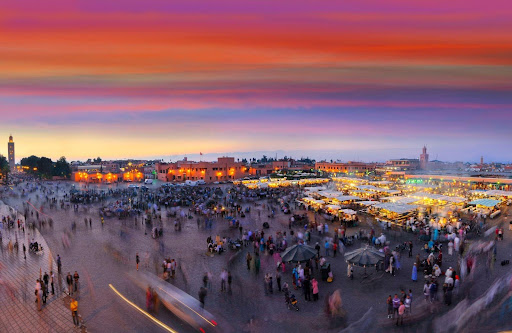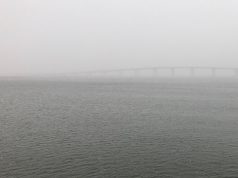Step Into the Magic of Morocco
Imagine walking through winding streets where the aroma of spices greets you at every corner, and the sounds of local musicians echo against centuries-old walls. The sun casts a golden glow on markets brimming with vibrant colors, and the desert waits with endless dunes stretching to the horizon. This is Morocco — a land where history, culture, and adventure intertwine.
If you’re planning to travel to Morocco in 2026, this guide will help you uncover the best experiences, from iconic cities to hidden gems, traditional dishes, and unforgettable cultural encounters. Morocco isn’t just a destination; it’s a journey that leaves a lasting impression on your senses and soul.
Why Morocco Should Be on Your 2026 Travel List
Morocco has always captivated travelers, but 2026 is shaping up to be a particularly exciting year to explore this North African jewel.
- Enhanced travel routes: New high-speed trains and domestic flights make exploring cities and remote areas easier than ever.
- Cultural events: Festivals like the Marrakech International Film Festival and Essaouira’s Gnaoua Music Festival promise vibrant cultural experiences.
- Sustainability focus: Eco-lodges, desert camps powered by solar energy, and community-based tourism projects make your travels responsible and immersive.
- Accessibility: Many countries enjoy visa-free entry, and flight options from Europe, North America, and Asia have increased.
Why wait? 2026 is the perfect year to experience Morocco at its most dynamic and welcoming.
Top Places to See in Morocco (2026 Edition)
Morocco offers a mix of bustling cities, serene towns, and natural wonders. Here’s a look at must-see destinations:
Marrakech – The Red City
Marrakech is a sensory adventure. Explore Jemaa el-Fnaa, where storytellers, snake charmers, and food stalls create an unforgettable atmosphere. Visit Bahia Palace for intricate architecture, or relax in the tranquil Majorelle Garden, once owned by Yves Saint Laurent. In the evening, enjoy mint tea on a riad rooftop while watching the sunset.
Tip: Visit in spring or autumn to avoid extreme heat.
Fes – The Cultural Heart
Step back in time in Fes el-Bali, a UNESCO World Heritage site. The ancient medina is home to Al-Qarawiyyin University, the world’s oldest university, and vibrant markets filled with traditional crafts. Wander narrow alleys, observe artisans at work, and soak in Morocco’s rich cultural heritage.
Chefchaouen – The Blue Pearl
High in the Rif Mountains, Chefchaouen is famous for its cobalt-blue streets and peaceful atmosphere. Stroll through charming alleyways, browse local handicrafts, and hike nearby trails for panoramic views.
Casablanca & Rabat – Modern Morocco
Casablanca blends tradition and modernity. Visit the Hassan II Mosque, one of the world’s largest, or enjoy the waterfront Corniche. Rabat, Morocco’s capital, offers a calmer pace with its gardens, museums, and historic sites like Chellah and the Royal Palace.
The Sahara Desert – The Golden Silence
The Sahara is an adventure you’ll never forget. Ride a camel across the rolling dunes of Merzouga or Erg Chebbi, enjoy starlit nights in desert camps, and witness sunrises painting the sands in gold.
Moroccan Food Guide 2026 – What to Eat and Where
Moroccan cuisine is a celebration of flavor, color, and tradition. Every dish tells a story, blending Berber, Arab, Andalusian, and French influences.
Traditional Dishes You Can’t Miss
| Dish | Main Ingredients | Description |
| Couscous | Semolina, vegetables, meat | Morocco’s national dish, often shared during family gatherings |
| Tagine | Meat, vegetables, dried fruits, spices | Slow-cooked stew served in a traditional clay pot |
| Pastilla | Pastry, chicken/pigeon, almonds | Sweet and savory pie typically served at special occasions |
| Harira | Lentils, chickpeas, tomatoes | Popular soup during Ramadan |
| Mint Tea | Green tea, fresh mint, sugar | Icon of Moroccan hospitality |
Street Food & Modern Twists
- Msemen: Flaky Moroccan pancakes often eaten for breakfast.
- Brochettes: Grilled meat skewers available at local markets.
- Fresh seafood: Especially in coastal cities like Essaouira.
- Fusion cuisine: Vegan tagines, Moroccan-French fusion dishes, and farm-to-table restaurants are becoming increasingly popular.
Experiencing Moroccan Culture in 2026
Festivals and Events
- Marrakech International Film Festival: Celebrate global cinema with Moroccan flair.
- Gnaoua Music Festival in Essaouira: Enjoy hypnotic rhythms and vibrant street performances.
- Rose Festival in Kelaat M’Gouna: Celebrate the fragrant Valley of Roses each spring.
Art, Architecture & Design
Moroccan architecture is a visual feast. Admire the intricate mosaics of zellige, carved cedar ceilings in riads, and the harmonious blend of Berber, Arab, and Andalusian styles. Key sites include the Koutoubia Mosque, Hassan Tower, and historic medinas.
Local Customs & Etiquette
- Accept mint tea when offered — it’s a symbol of hospitality.
- Dress modestly, especially in rural areas or when visiting mosques.
- Bargaining in markets is expected — approach it as a cultural experience, not a chore.
Travel Tips for Morocco 2026
- Getting Around: Use high-speed trains for major cities, buses for medium distances, and taxis or car rentals for rural areas.
- When to Visit: Spring (March–May) and autumn (September–November) are ideal for sightseeing and desert trips.
- Money & Budget: Moroccan Dirham (MAD) is the local currency. Here’s a quick reference:
| Category | Budget Traveler | Mid-Range | Luxury |
| Accommodation | $25–$60/night | $80–$150/night | $200+ |
| Meals | $10–$25/day | $30–$60/day | $80+ |
| Activities | $20–$40/day | $50–$100/day | $150+ |
- Safety: Morocco is safe for solo travelers and families. Standard travel precautions are sufficient.
Shopping & Souvenirs
- Rugs & Textiles: Handmade carpets from the Atlas Mountains.
- Leather Goods: Bags, slippers, and jackets from Fes tanneries.
- Spices & Argan Oil: Perfect gifts and culinary keepsakes.
- Pottery & Ceramics: Colorful and functional souvenirs from Marrakech or Safi.
Tip: Polite haggling is part of the culture and adds to the experience.
Frequently Asked Questions – Morocco Travel Guide 2026
Q1: Is Morocco safe to visit in 2026?
Yes, Morocco is among North Africa’s most secure and tourist-friendly countries.
Q2: Do I need a visa for Morocco?
Travelers from the EU, UK, and US typically enjoy 90-day visa-free entry.
Q3: What’s the best time to visit Morocco?
Spring and autumn provide comfortable weather for both cities and desert excursions.
Q4: What currency is used in Morocco?
The Moroccan Dirham (MAD), though credit cards are accepted in hotels and restaurants.
Q5: What should I pack for Morocco?
Light layers, comfortable shoes, sun protection, and modest clothing for cultural sites.
Your Moroccan Adventure Awaits
From the bustling souks of Marrakech to the quiet beauty of the Sahara, Morocco is a land that captures your senses and imagination. Every street corner, every dish, and every interaction tells a story.
Don’t just dream about it — plan your Morocco 2026 adventure now. Explore the culture, taste the cuisine, embrace the colors, and create memories that will stay with you forever.
Book your trip, pack your curiosity, and let Morocco show you a world where tradition, flavor, and adventure come alive.







